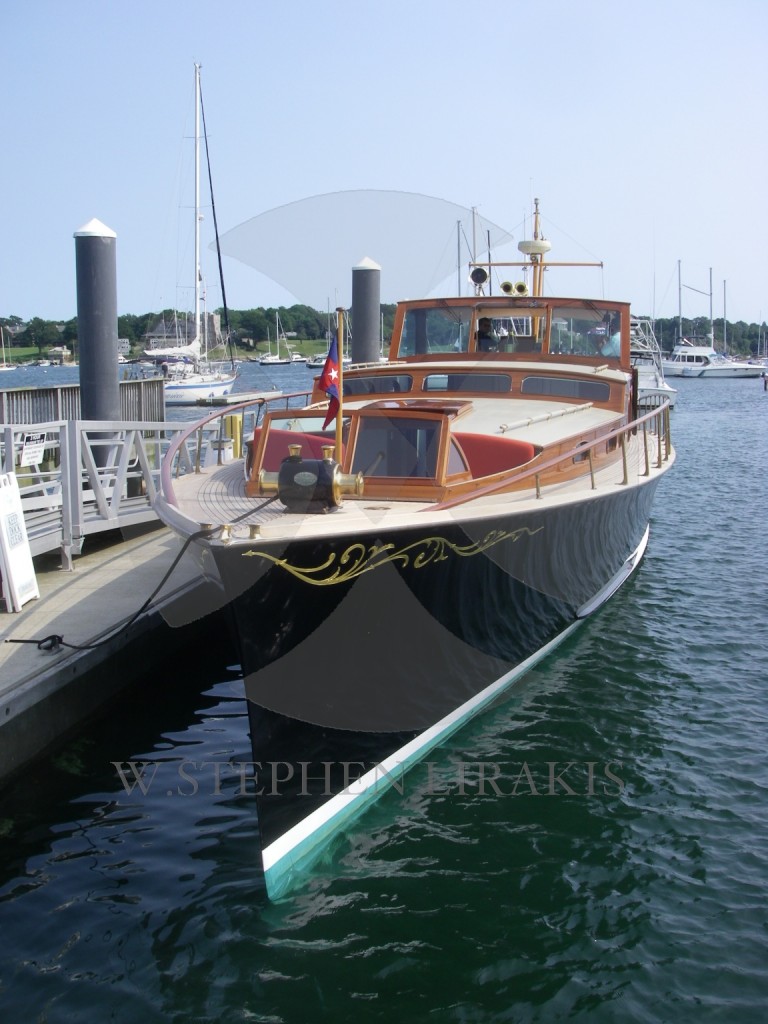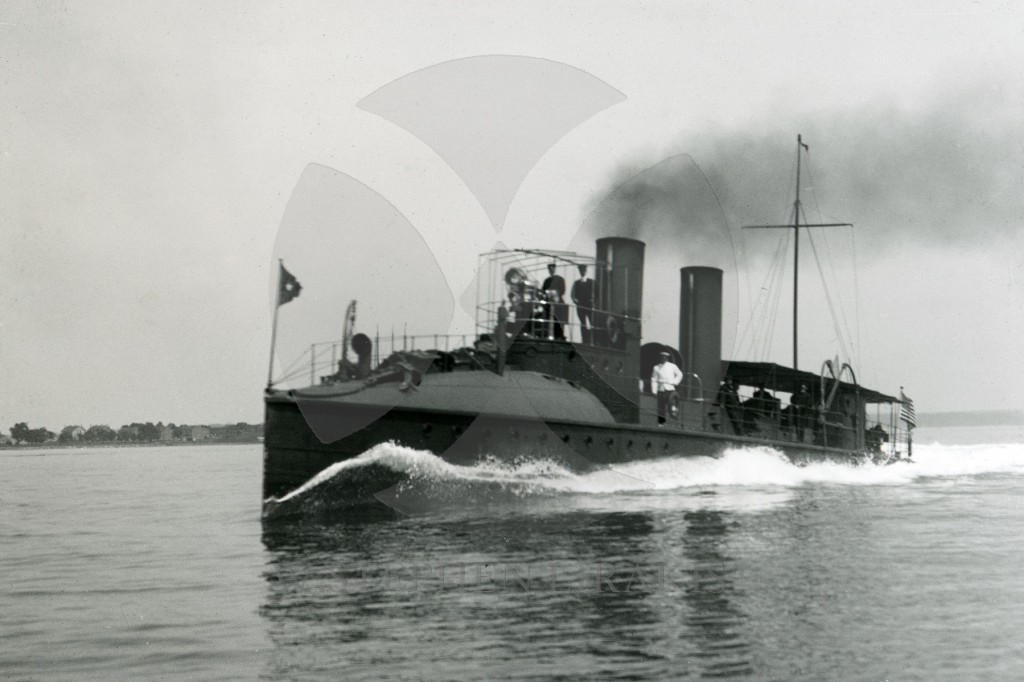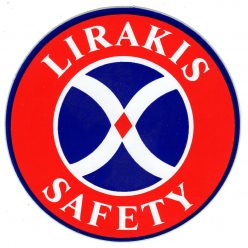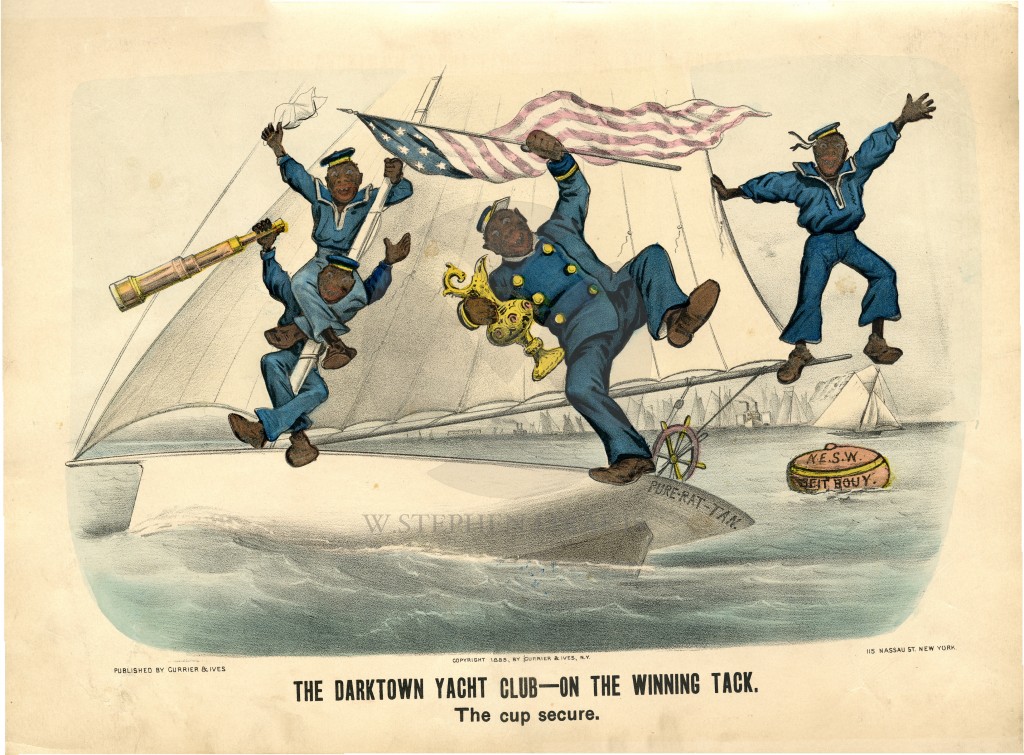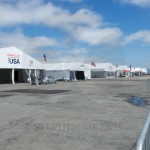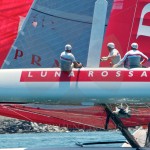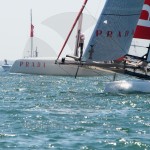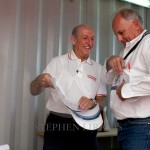SRM: How would you compare and contrast your role on the AC72 to people’s established perceptions of an bowman on the AC monohulls of old?
Brad Webb: It’s a complete departure. Those who have followed the Cup over the years will be familiar with the old monohull style where there was a foredeck team and we were putting spinnakers up and down all day, doing jib changes and gybe-peels and all of that sort of fun stuff. Back then the bow team needed to be three, four or even five people, including the pitmen, to choreograph all the manoeuvres.
Now that has all gone. On the AC72 we are picking a downwind sail to start the race with and that will be already hoisted at the start, we are more or less picking a jib for the day – or at least we will certainly be picking a jib for the race, come the Cup.
The other difference is that, in the past it was an hour and a half or two hour race around a 12 mile course, whereas in the 34th America’s Cup it will be a 35 to 40 minute sprint up and down the San Francisco city front. There will really only be one drop at the bottom with the gennaker and one hoist at the top – maybe another pair of those if they send us round twice – and that will be it.
So that old style bowman job has gone and been replaced with a high energy role with a lot of grinding and running from side to side. I think the defined roles of bowman pitman and grinder have all been blended a lot, so we all need to be skilled up on all the systems of the boat and ready to jump into any role anywhere around the racecourse. In particular, I think the biggest new aspect to the role is dealing with the boards.
SRM: So the classic shot of the bowman up on the headstay calling time and distance to the line with the fingers of one hand have gone?
Brad Webb: It really has – now we are just another one in the pack and that role has kind of gone.
Also if you look back to the IACC days, we were starting the boat upwind and just having that jump of a metre or two could make a huge difference. Now in the AC72s, because they are travelling so fast, getting a good start is more to do with your position on the line and your trajectory to the next mark than it has to do with ‘boat relative’. You can actually be a metre or two behind your competitor but have a better angle to the first mark and go smoking by.
The other thing is that there is really no bow to speak of on these boats so you are not going to send somebody up on the spine to call the line.

SRM: Looking specifically at a tack or a gybe, what are your responsibilities as a bowman?
Brad Webb: Well pretty much everyone is grinding, either to power the hydraulics or to bring the new sheet on. If it’s a gybe we may do a half furl of the gennaker to help get it around. Then there is the wing as well which has to be trimmed. So yes, everyone is grinding, right back to the tactician and the strategist on the back.
My role currently is in cockpit three and because I have a background of working in hydraulics, myself and Simeon Tienpont we are responsible for getting the boards up and down. The foils are such a crucial part of these boats, especially now that they are foiling. I think the sailing world has become pretty aware that foiling is where we are going with the Cup in these boats.
The speed difference when the boat is out of the water is dramatic, so it is about keeping the boat on the foils as much as possible and through the manoeuvres that requires us to operate the boards in the most efficient manner possible to keep the boat foiling in and out of the gybes. So, making sure we minimise drag and maximise the efficiency of the foils is one of our main roles.

SRM: Tell us about how you communicate on the boat. It must be pretty noisy so you all use headsets. What is the conversation like?
Brad Webb: It is pretty noisy. On our boat we are all in a line there onboard and those of us who are in cockpit three and around Jimmy can hear him a lot of the time. But certainly the guys in cockpits one and two can’t hear anything. There are times of course when we are on opposite sides of the boat and then our communications become very important.
We are really still trying to figure out who we need to hear onboard. We started out on our programme with a lot of people talking and as we have learned the boat and as we are learning the racecourse and what goes on in the manoeuvres we have actually reduced that down to just the helmsman talking. We amy bring people back in – the trimmer and the tactician for example – as we get towards racing and we need to start hearing the big picture information about what sort of manoeuvres are coming up.
Right now, in training, just knowing the next move is enough for us.
SRM: One thing fans of the America’s Cup all want to know is if we are going to see any actual match racing in the pre-start period?
Brad Webb: Yes, I think that also remains to be seen but I think we will like we have seen it in the AC45s. We haven’t seen Team New Zealand and Prada practise it to any great degree yet and obviously we didn’t get a chance to get to that with Artemis to get to that.
I think there are two sides to it too. You know a lot of the stuff that people say they will miss – like the dial up and the jockeying to the line that was seen at Cups of old – was pretty difficult for spectators to really understand. Like why two boats were sitting head to wind in the middle of the line and not going anywhere. Although that was extremely tactical and strategical in terms of how you went into that and how you came out of it, it was hard for a non-sailing fan to really understand.
Now what all that has been replaced with is these incredible reaching starts where the boats are instantly going to be doing 35 knots on that first reaching leg. Straight after they we will be deploying spinnakers and spearing off towards the city front at speeds in the high thirties.
So the game has definitely changed but I think in general in terms of the spectacle, it has only gone in the right direction.
